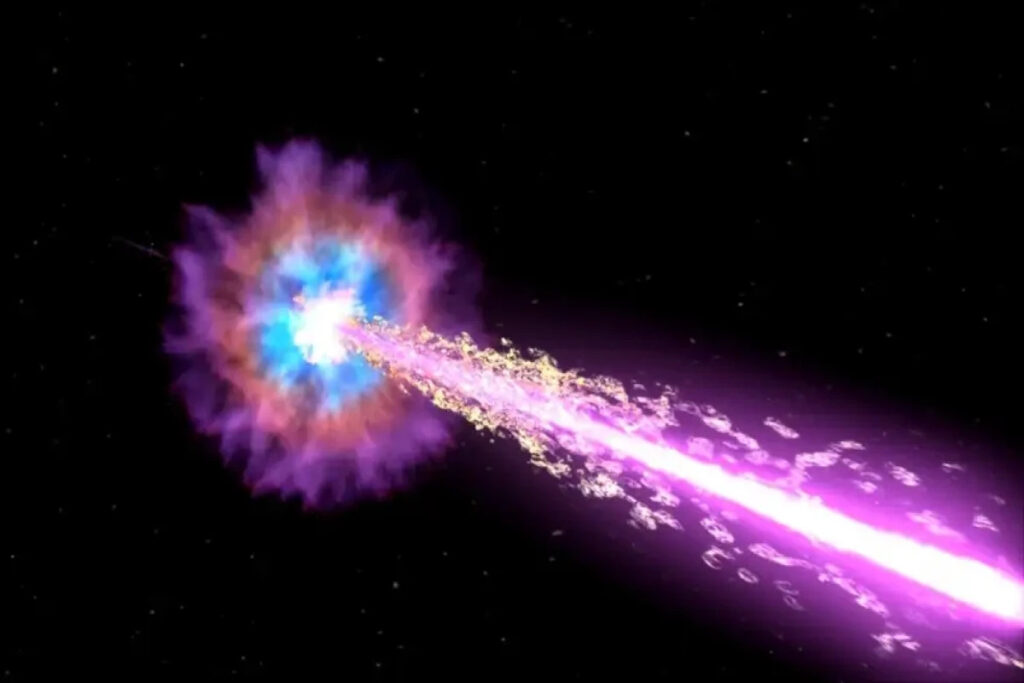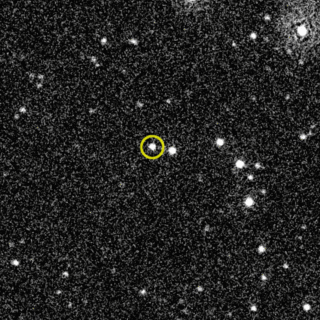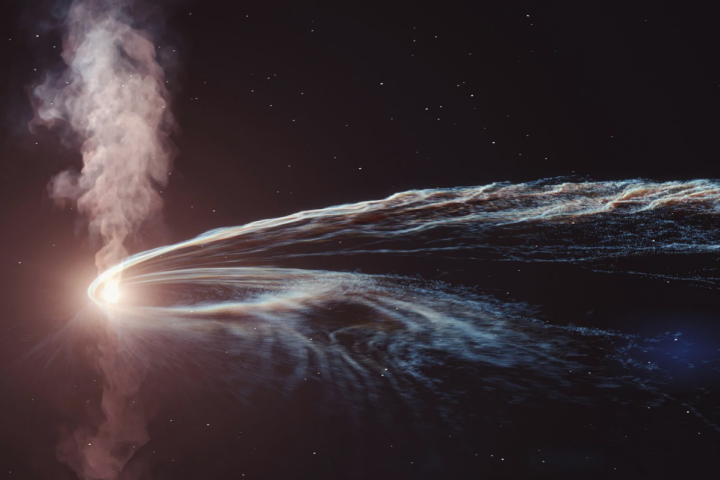 An illustration of a gamma ray burst. NASA/Swift/Cruz deWilde
An illustration of a gamma ray burst. NASA/Swift/Cruz deWilde
–
The signal, designated GRB 221009A, was detected on October 9 – although the explosion itself occurred 1.9 billion years ago. It came from the direction of the constellation Sagitta, and was visible to telescopes for more than 10 hours, making it one of the longest-lasting GRBs detected.
That’s not the only odd thing about it – GRB 221009A was found to deliver the highest energy of any GRB ever detected. The energy of these events is usually measured in giga-electronvolts (GeV), but a few have been recorded with energies of about 1 tera-electronvolt (TeV). But this new event may have reached a record-breaking 18 TeV, marking the first detection of a GRB with energies above 10 TeV.
At least, that’s according to data from a Chinese observatory called the Large High Altitude Air Shower Observatory (LHAASO), which is designed to detect gamma rays and cosmic rays by measuring cascades of particles they set off in Earth’s atmosphere. This data will need to be verified by other teams before GRB 221009A can earn its place in the record books.

Regardless, this gamma ray burst remains one of the most energetic and brightest ever detected, largely because it’s relatively nearby. While 1.9 billion light-years may not sound very close, most others are detected several billion light-years or more away. This proximity also explains why it glowed for so much longer afterwards. Astronomers say it might be decades before another GRB this bright is detected.
“This burst is much closer than typical GRBs, which is exciting because it allows us to detect many details that otherwise would be too faint to see,” said Roberta Pillera, an astronomer who led the first communications about the burst. “But it’s also among the most energetic and luminous bursts ever seen regardless of distance, making it doubly exciting.”
While it’s still uncertain exactly what caused the GRB, the prime suspect is a massive star collapsing into a black hole at the end of its life. This process ejects powerful jets of particles into space, emitting X-rays and gamma rays in the process.
It’s worth noting that despite its intensity and proximity, this GRB is harmless to Earth. It’s thought that were one to go off within our own Milky Way and its beam just so happened to be pointing directly at Earth, it could cause a mass extinction. Thankfully though, GRBs are thought to be relatively rare events, with only a few occurring per galaxy per million years, and an even smaller percentage of those would fire in Earth’s exact direction.
Instead, we can sit back and enjoy the cosmic fireworks.
Source: NASA
–
–























